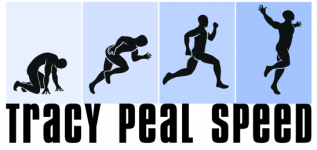Are You Fit?
Well are you? And if so, how do you know? America has long had a fascination with fitness and the customary qualities associated with a “fit lifestyle”: health, vigor, youth. Thinking Jack LaLane (may he rest in peace) through Tony Horton will conjure up images of physical fitness culture that has progressed from simple bodyweight calisthenics to a kitchen-sink mentality combining such diverse elements as yoga and high-intensity jumping drills. If you’re a couch potato, how do you get started? If you’re already running 5 miles per day and lifting weights, how do you know you’re doing the right thing? And if you’re injured, what do you do now?
I recently conducted some informal research (at Barnes and Noble, no less), looking for answers to the questions posed. The bookstore seemed the logical place to find expert information on the subject of health and fitness. A mere five minutes in the store, led me to the following book and magazine titles (I took photos just to make sure I was accurate): The 4-Hour Body, The Primal Blueprint, Healing Spices, The Men’s Health Big Book Of Food, Bold & Healthy Flavors, Sonoma Diet, The G Free Diet, Lose Up To 10lbs in 2 Weeks, From Belly Fat to Belly Flat, Abs Diet, Eat to Live, Power Juicing, 101 Muscle-Building Workouts & Nutrition Plans, Sexy Forever, The Flex Diet, The Metabolism Miracle, Eating For Life, The Paleo Diet, Cinch!, Change Your Brain/Change Your Body, Body By Design, The Life You Want, The Happy Herbivore, Crazy Sexy Diet, The Lean Belly Prescription, Bring It!, Now Eat This, How Not To Look Old, Get Energy!, 101 Workouts, The Daily dozen, The New Evolution Diet, Whole Living, Natural, Health, Life Extension, Diet & Exercise, Yoga, Yoga for Fitness, WeightWatchers, Self, Shape, Fitness, body Fit, Health & fitness, Oxygen, Muscle & Fitness, Men’s Health, Men’s Fitness, Fitness Rx, Women’s Fitness, Women’s Health, Experience Life, Pilates Style & The Well-Being Journal. Upstairs there were another eight cases of diet, exercise and women’s health-related books, ad nauseum. Not to mention, the amount of titles about running, endurance running, track & field and triathlon training.
With such a plethora of information, where does one begin? On one hand, we embrace the easy fixes – the trendy solutions to our fitness desires and overweight woes, and on the other, celebrate the extreme success stories of endurance and athletic feats that eludes the majority of us. You may get up from the couch and start walking, finding yourself three months later in a local 5k race. You may look at the scale and venture to dream about completing a marathon or triathlon. Whatever your aspirations, there are some common-sense guidelines to follow.
1. Get a medical check-up – Before starting any fitness regime, you should (if you haven’t exercised in awhile) make sure you are physically fit enough to get physically fit. If you have a history of problems (from cardiovascular to musculoskeletal) have a professional doctor or chiropractor sign-off on you starting to exercise.
2. Find professional help – Although many of us have some background with working-out, it’s always best to elicit the help of a coach or trainer. Checking qualifications and/or testimonials is a must. Your goals will be more achievable if you have a specific course of action, and the chance for injury or poor results is lessened with the proper help.
3. Be realistic about your goals – You may want to climb Mt. Everest, but understand that there’s a progression that should be followed. When I’m dealing with athletes, there is a sequence of knowledge, understanding, awareness, perception and practice that must be adhered to. As they say, you have to crawl before you walk, walk before you run.
4. Eat better – With all of the diet and nutrition books on the market, there is an obvious concern for what what eat. In the same way that exercise programs are based on general principles with individual applications, so too is your nutrition plan. Again, a metabolic evaluation can provide insight into what your body is lacking and help you make intelligent food choices. You’ll never go wrong with organic choices, smaller more evenly distributed meals and an avoidance of processed foodstuffs.
If you want to eschew all of this advice and do-it-yourself, I have one suggestion which is based on our most basic evolutionary need: move. And all movement begins with knowing yourself, feeling your own bodyweight in motion, freeing your mind from restrictions. The effect will be a youthful energy that imbues your life. In the end, you’ll hopefully have less days of inactivity. Although, as one woman advised me in the bookstore, “When it’s too much, I just go home and have a cookie.”

